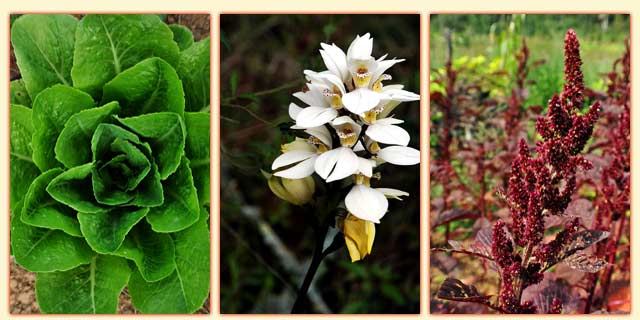
![]()
The Bosque is a second growth forest of oak, pine, and madrone trees. Among the native plants we are reestablishing are orchids, epiphytic cactus, magueys, nopales, membrillos, and bromeliads. Every June we work hard to plant a variety of new trees and other plants to help diversify the forest. Trees we plant include cedar, ash, peach, plum, avocado, jacaranda, citrus, madrone, pomegranate, fig, mandarin, and capuline. We graft pear and quince onto the native membrillo trees.
Plant Propagation
We do air layering, cuttings, seed collection and planting, and grafting. Visitors can take a plant propagation class.
Plant Identification Project
With the help of locals, indigenous friends, volunteers, and botanists we are identifying the thousands plants in the forest. We are learning their traditional medicinal and culinary uses. Each plant will be tested for fiber strength, dye potential, medicinal value, aroma, edible value, paper making use, and building value.
Around the area
The nearby lava flow has an entirely different eco-system of amazing plants and animals. It makes for a great day trip.



The Bosque is home to lots of bugs, birds, and furry friends. Some of our guests have seen deer, ocelots, armadillos, coyotes, road runners, great horned owls, and more. Birdwatchers rave about the number of different birds to be seen here. Unfortunately our dogs do scare some of the creatures away (though the coyotes think it is fun to teach them how to howl, and there is a large population of rabbits and squirrels). We keep fallen branches on the ground of the forest to provide habitat.
There are no lions or bears in the Bosque, nor poisonous ivy, oak, or nettles. Very rarely you will see a scorpion, tarantula, or rattle snake, but they are quite shy and do not want to harm you. Many caterpillars here are poisonous and sting quite harshly, so don’t pick one up unless you know the species!
Around the area
We are just a few hours away from famous monarch butterfly sanctuaries. Every winter monarchs flock to central Mexico, literally covering the trees. You can read about the Mariposa Monarch Biosphere Reserve on Wikipedia